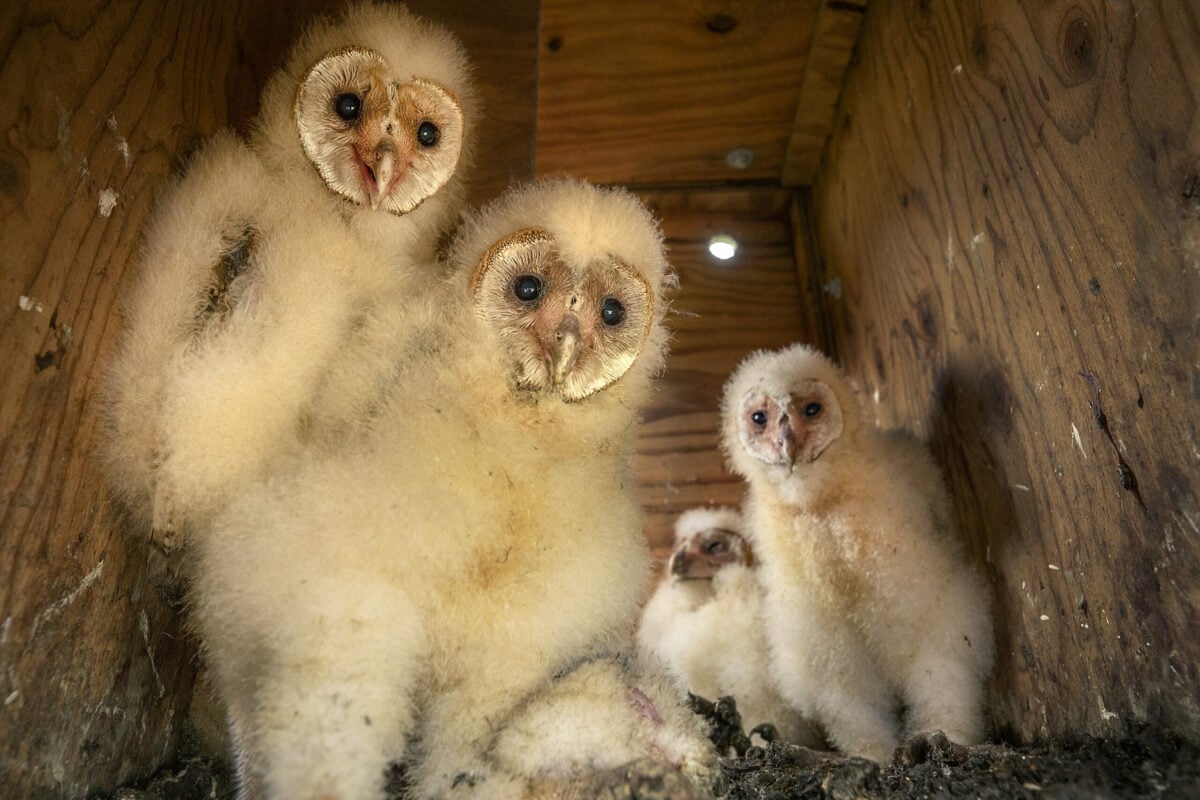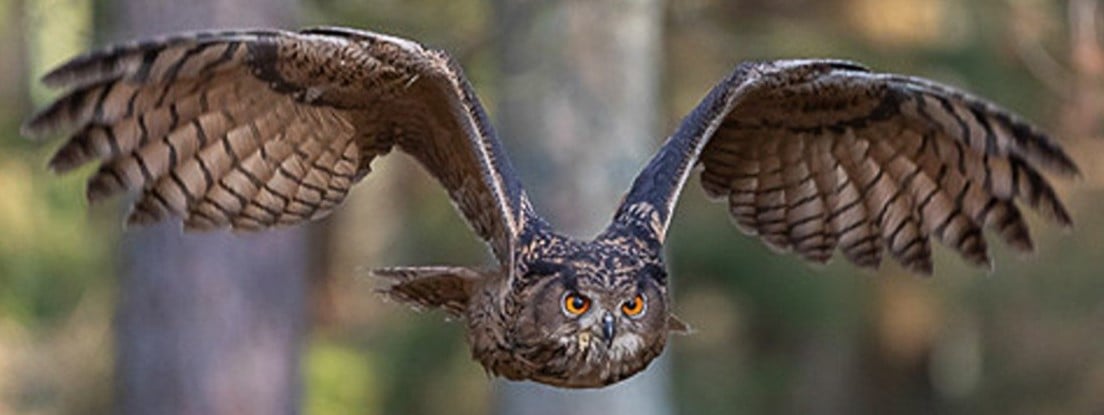From Sonoma Magazine
Barn owls are the sole vineyard workers to take no note of harvest season. From their perspective up in tree hollows, barn lofts and custom nest boxes mounted on poles, the rows of vines laden with ripe fruit are of little interest.
They’re focused instead on the ground below, where their work is done and their food — rodents — is found. A family of barn owls may eat more than 1,000 in a single season. That translates into a lot of critters that won’t be feasting on the tasty (so we hear) roots of grapevines.
Kelsey Reidinger of Sonoma County Wildlife Rescue says that roughly half of the 40 or so new nest boxes installed annually through its 13-year-old Barn Owl Maintenance Program (BOMP), are placed in vineyards.
“Because gophers can cause such issues for winegrape growers, barn owls are attractive to vintners,” she says.
Members of the Wildlife Rescue’s Barn Owl Management Project introduced a foster owl, second from right, into an established family on a vineyard property in Sonoma County. The owls reduce rodent populations, bringing up to 25 gophers back to the nesting box each night. (John Burgess/The Press Democrat) The other half of the group’s owl boxes go into other types of agricultural fields. Either way, the real winner is the region’s overall ecological balance. Barn owls are natural predators of gophers, and our open landscapes are their natural habitat. That’s why they’re called barn owls, after all: They tend to find shelter there, surrounded by farmland.
Barns and fields mimic the tree cavities in grasslands and savannas to which they’re adapted. (Great horned owls, also common countywide, prefer more wooded areas.) Resident owls also forestall the need for rodent poisons, which can be counterproductive by also killing predators.
Though barn owls don’t give a hoot about harvest, late summer and early fall are important for other reasons. This is when juvenile owls, at their own ripe old age of two months, fledge from the nest. And it’s when vacant owl boxes must be thoroughly cleaned, another service that Sonoma County Wildlife Rescue provides.
“After they’re born, these owls are doing all of their business inside of the box, and they do no housekeeping,” Reidinger explains. “Over the 60 days that they’re in the box, it leads to inches of material.”
After all, a clean owl box is a healthy owl box, and a healthy barn owl is worth more than its weight in fine wine.


I really appreciate the positivity in this community, and it hurts my heart to even see posts of injuries. However, I also believe it is important to be aware of things that hurt, especially if there is something to be done about it. I'm not sure which way is right for this community, but I trust you will make a thoughtful choice. Thank you for all you do!
I appreciate the input.
The medical ones I typically only post after the owl recovers, as sometimes things can change quickly due to their delicate physiology. That way even though we see them a bit roughed up, by that point, they are already safe and on the road to recovery.
A few times I put the more graphic things in spoiler tags so they didn't bother anyone that didn't want to see that step of recovery. Maybe I will go back to that.
The trafficking and ceremonial use of animals is stuff that I know goes on, and I feel I should at least stay educated about what's going on, but that is my individual decision. Whenever I've shared some downer things here, I've tried to make it clear by the title so people can skip it. I've tried sharing a few on .mander's biodiversity community instead, but they didn't get much attention.
I'm glad you all come here and enjoy the things I share with you! We get to look at some really cool stuff and learn a lot together.